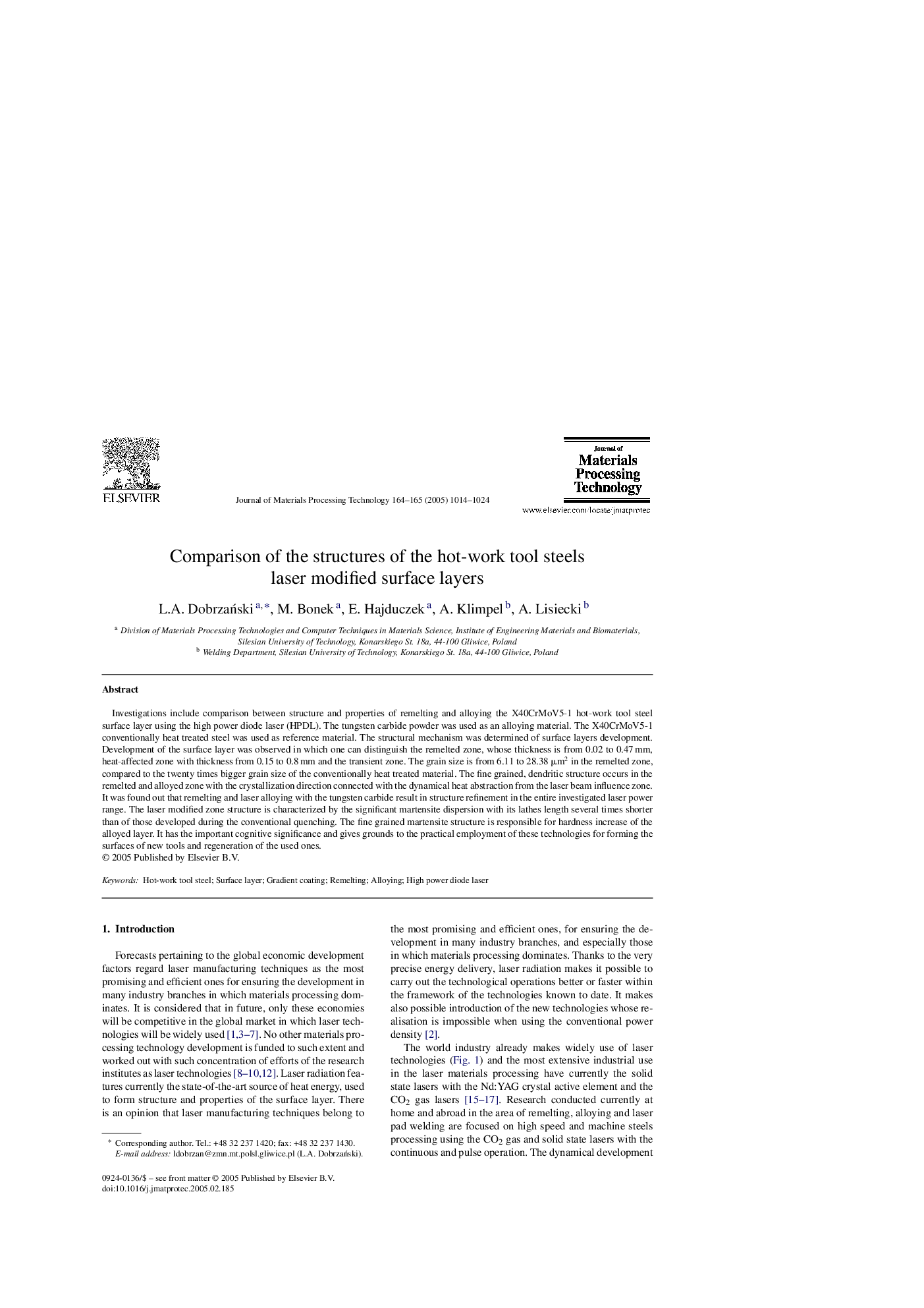| Article ID | Journal | Published Year | Pages | File Type |
|---|---|---|---|---|
| 9708965 | Journal of Materials Processing Technology | 2005 | 11 Pages |
Abstract
Investigations include comparison between structure and properties of remelting and alloying the X40CrMoV5-1 hot-work tool steel surface layer using the high power diode laser (HPDL). The tungsten carbide powder was used as an alloying material. The X40CrMoV5-1 conventionally heat treated steel was used as reference material. The structural mechanism was determined of surface layers development. Development of the surface layer was observed in which one can distinguish the remelted zone, whose thickness is from 0.02 to 0.47 mm, heat-affected zone with thickness from 0.15 to 0.8 mm and the transient zone. The grain size is from 6.11 to 28.38 μm2 in the remelted zone, compared to the twenty times bigger grain size of the conventionally heat treated material. The fine grained, dendritic structure occurs in the remelted and alloyed zone with the crystallization direction connected with the dynamical heat abstraction from the laser beam influence zone. It was found out that remelting and laser alloying with the tungsten carbide result in structure refinement in the entire investigated laser power range. The laser modified zone structure is characterized by the significant martensite dispersion with its lathes length several times shorter than of those developed during the conventional quenching. The fine grained martensite structure is responsible for hardness increase of the alloyed layer. It has the important cognitive significance and gives grounds to the practical employment of these technologies for forming the surfaces of new tools and regeneration of the used ones.
Related Topics
Physical Sciences and Engineering
Engineering
Industrial and Manufacturing Engineering
Authors
L.A. DobrzaÅski, M. Bonek, E. Hajduczek, A. Klimpel, A. Lisiecki,
